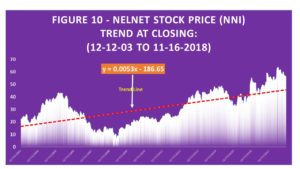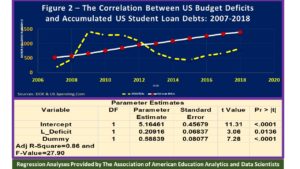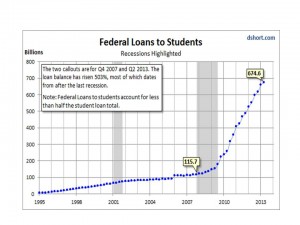It is now pretty clear that there is no public policy prepared to manage the US student loan debts–at least not in the near future. It seems that the regulator would rather (1). Blame others; (2). Do nothing policy; (3). The issue is too touchy and difficult to solve; and (4). Waiting for miracle to happen to solve it.
Apparently, the US policy makers do not have the ability, will or way-out to deal with skyrocketed student loans. The reason is simple in that the majority of the participants in some ways are the contributors and creators of the systematic errors. In such a case, one contributing player could do is to eliminate her or his own errors, yet she or he does not have any ability to manage systematic errors that have been added by other players. For example:
- Interest rate is determine by the Legislative Branch. Therefore, the Executive does not have any control to change that.
- The second example could come from the Executive Branch and the loan servicing companies (NNI or NAVI) who have been awarded the contract to collect the loan payments. Any implemented business policy or strategy irregularities applied by these companies cannot be control by the Executive.
- Recently the regulator revived its sanction on ACICS to be in business again, ignoring the findings of comprehensive studies that have been conducted by the US Senator Elizabeth Warren. Pretty ironic.
Having studied this issue for many years, the Association come to a conclusion that student loan crises will get worse in the future because no one is able, want or plan to manage it. Secondly, the borrowers should not expect to get any help if they are stumbled and get caught into it. Therefore, read the fine prints carefully before signing any promissory notes.





